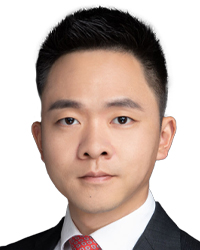Secondary editing of short videos refers to creators’ reworking original film and television content, adding subtitles, commentary, editing and other modifications to produce new short video works. Unlike China’s Copyright Law’s definition of derivative works, these edited videos often lack the original creators’ consent or authorisation, potentially leading to copyright disputes. This article outlines the key compliance points for secondary editing from a video creator’s perspective.

Partner
AllBright Law Offices
Determining the originality of short video works in secondary editing. The Copyright Law protects intellectual works that possess originality and replicability. For short videos, the key to being recognised as protected under the Copyright Law lies in the assessment of originality. Specifically, originality requires that creators of secondary-edited content to not only complete their work independently but also express their intended ideas and creative emotions.
If the video merely involves simple truncation, splicing or shortening of original film and television works without demonstrating creativity, it does not qualify for protection under the Copyright Law.
Short videos created through secondary editing are typically characterised by concise content and brief duration, but length is not the decisive factor in determining originality. In practice, determining the originality of secondary-edited short videos primarily relies on content standards. This involves a substantive examination of the video materials used to determine if they substantially replace the original video.
Typically, if the core elements of a copyrighted original video are displayed without the copyright holder’s permission, and this effectively substitutes the original work, thereby unreasonably harming the rights holder’s legal interests, the secondary-edited video is considered to lack originality.
Compliance with the fair use doctrine. Even if a short video qualifies as a work, its secondary editing must adhere to the fair use provisions of China’s Copyright Law. Fair use is an exception to copyright infringement. From a legislative perspective, the use of the original video works in secondary editing must be reasonable and limited.
Specifically, secondary editing of short videos must meet three conditions to be compliant:
- the original work must be published;
- the use must fit one of the 13 statutory fair use situations outlined in article 24; and
- the use must not interfere with the original video copyright holder’s normal use of the work.
To determine if the use of the original video in the edited short video is reasonable, the core question is whether the part used constitutes the essential, popular part of the original, specifically whether the substantive parts of the edited work overlap with the core elements of the original work. The greater the overlap with the original’s core content, the less likely it is to be considered fair use.
Additionally, whether secondary editing of short videos diminishes the economic value of the original video is another criterion for determining if the use exceeds the bounds of fair use. This reduction does not need to be immediate or direct, and any impact on the potential market by the secondary editing means it does not meet the requirements for fair use.
Clarifying the purpose of using original video material. Short videos created through secondary editing have the distinctive feature of using existing works.
Unauthorised use of others’ video works for secondary editing carries a high risk of infringement. In addition to meeting the three requirements of fair use, it is necessary to clarify the purpose of using the original video materials in secondary-edited short videos to determine whether such use harms the legitimate rights and interests of the original video copyright holder, such as the moral rights and property rights of the original video creator.
The former mainly involves the impact of secondary-edited short videos on the integrity of the original video work, with a potential risk of deviating from the original content. The latter mainly concerns the impact on the economic interests of the original video work, as the release of secondary-edited short videos may lead to negative consequences such as reduced viewership of the original video.
In judicial practice, the assessment of the purpose of creators in secondary short video editing often adopts the transformative use evaluation standard. This means that the use of original video works by secondary-editing creators is not merely copying or republishing, but rather adding new aesthetics, value and meaning.
Unauthorised use that merely slices and replicates the original video is generally deemed to be infringing. In addition, regarding the practice of using secondary-edited short videos to drive traffic and generate profit for the original video creators, although it may not meet the traditional elements of infringement in form, it still requires a comprehensive assessment based on the creator’s purpose in using the original video materials.
In summary, ensuring compliance in the secondary editing of short videos is a complex process. To determine whether such editing is lawful, one must first evaluate whether the short video possesses the originality characteristic of a copyrighted work. Subsequently, it is essential to apply substantive criteria to ascertain whether the editing aligns with the fair use stipulations outlined in the Copyright Law.
If the secondary creation does not utilise the core expressions of the original work and does not constitute a substantive replacement, further considerations such as the proportion and purpose of use of the original video must be assessed to make a comprehensive determination of potential copyright infringement.
Cheng Shixiong is a partner at AllBright Law Offices.
11/F and 12/F, Shanghai Tower
No. 501 Yincheng Middle Road
Pudong New Area, Shanghai 200120, China
Tel: +86 21 2051 1000
Fax: +86 21 2051 1999
E-mail: chengshixiong@allbrightlaw.com
www.allbrightlaw.com























